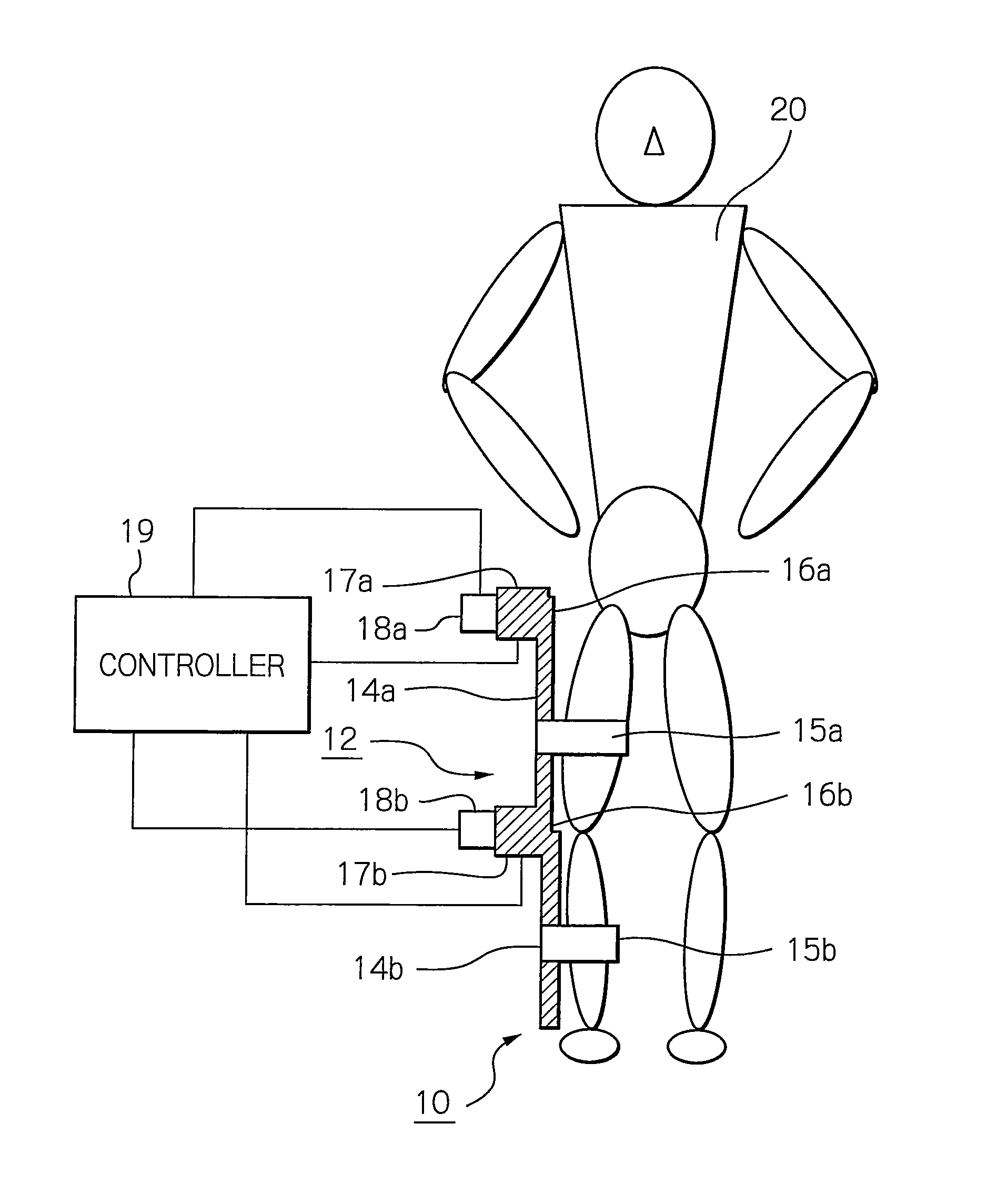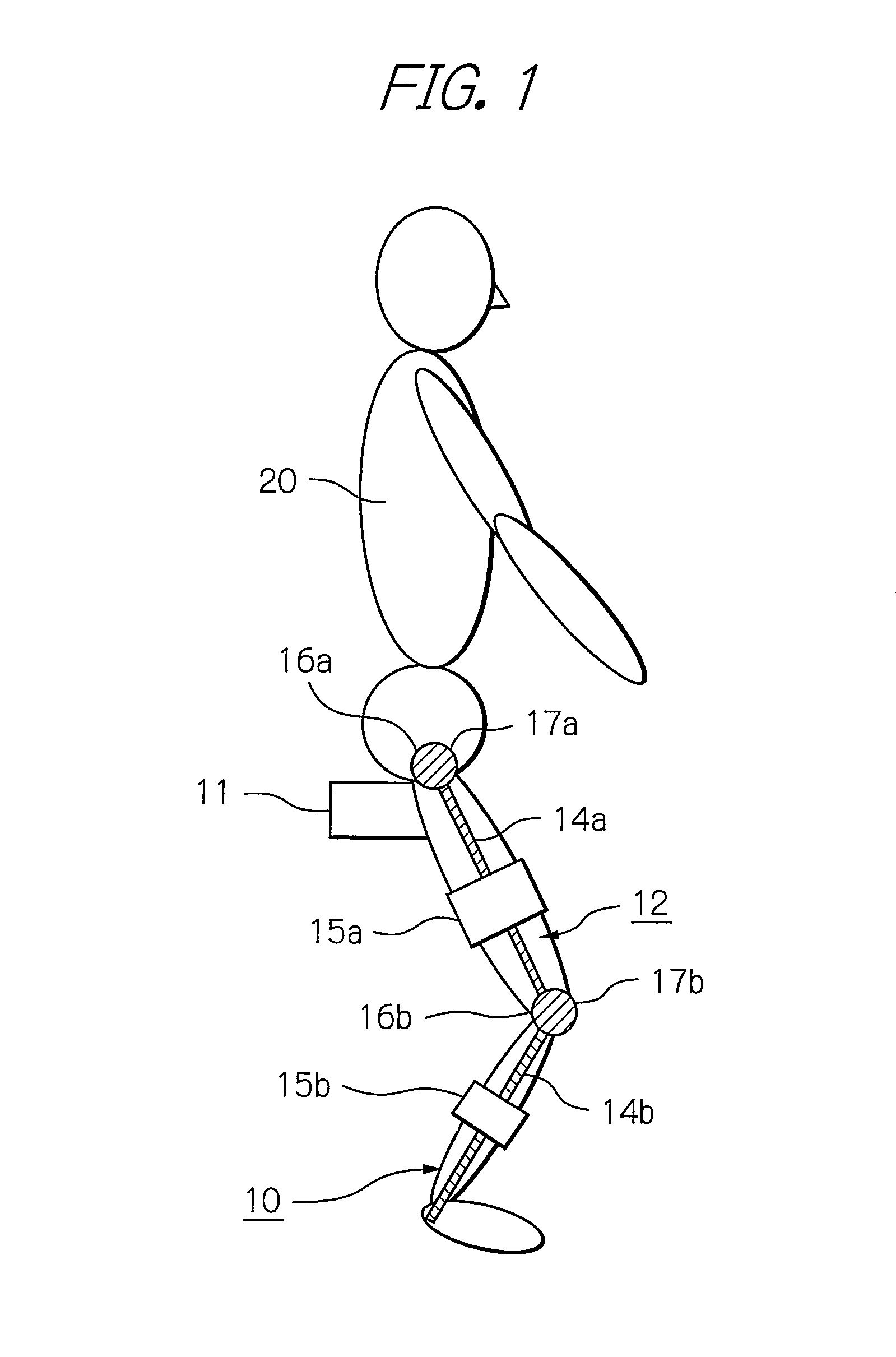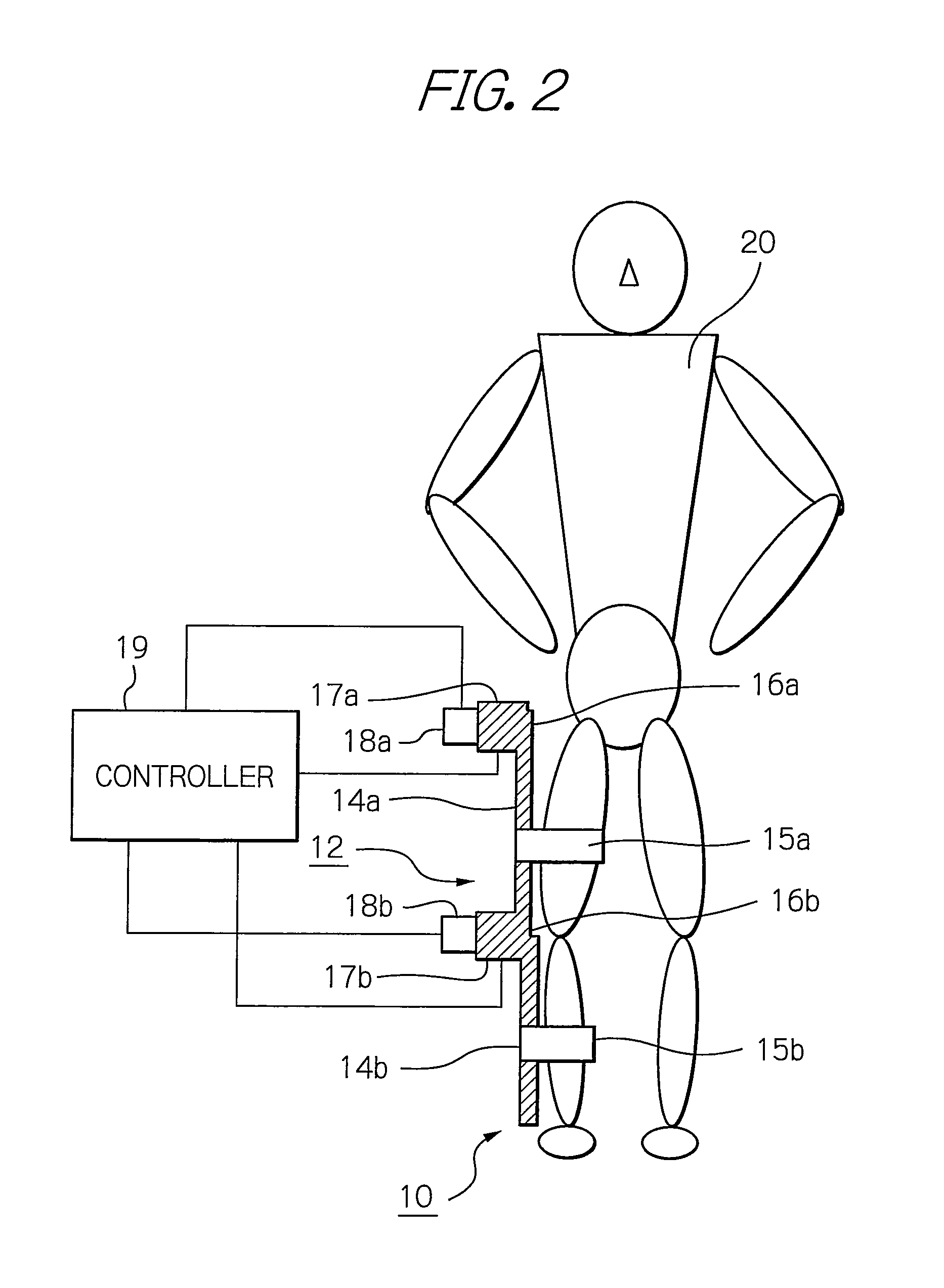Resistance-based muscular force evaluation and training utilizing elasticity following angular change of first and second joints
a technology of resistance-based muscular force and angular change, applied in the direction of force/torque/work measurement apparatus, gymnastic exercise apparatus, instruments, etc., can solve the problems of inability to comprehend the direction in which to exert the force, and the elasticity felt hard or soft is indefini
- Summary
- Abstract
- Description
- Claims
- Application Information
AI Technical Summary
Benefits of technology
Problems solved by technology
Method used
Image
Examples
Embodiment Construction
[0023]With reference to the accompanying drawings, preferred embodiments of the present invention will now be described in detail. First, with reference to FIG. 3, the reference numeral 20 denotes a user, or trainee, in the present illustrative embodiment. The user 20 performs evaluation and training of his or her muscular force using the resistance-based muscular force evaluation and training system. Initially, by way of giving the background information on the resistance-based muscular force evaluation and training system, the bi-articular link mechanism of the limbs of a human body will be described insofar as such a description is necessary for understanding the present invention.
[0024]As known, bi-articular muscles are present in the limbs, that is, four limbs, of the human body, and act in coordinate with the mono-articular muscles, operating on a sole joint, to control an output at the distal end thereof. This output may be represented by a hexagonal diagram of the characteri...
PUM
 Login to View More
Login to View More Abstract
Description
Claims
Application Information
 Login to View More
Login to View More - R&D
- Intellectual Property
- Life Sciences
- Materials
- Tech Scout
- Unparalleled Data Quality
- Higher Quality Content
- 60% Fewer Hallucinations
Browse by: Latest US Patents, China's latest patents, Technical Efficacy Thesaurus, Application Domain, Technology Topic, Popular Technical Reports.
© 2025 PatSnap. All rights reserved.Legal|Privacy policy|Modern Slavery Act Transparency Statement|Sitemap|About US| Contact US: help@patsnap.com



